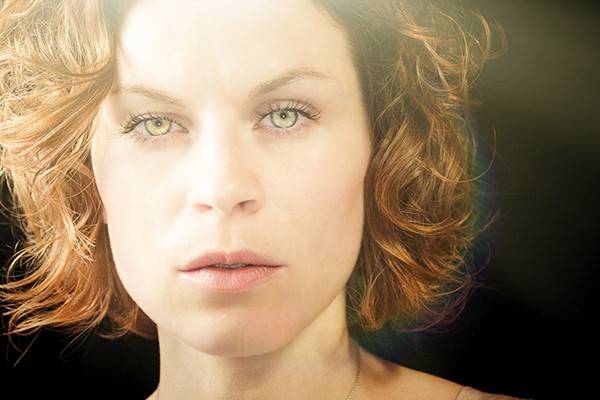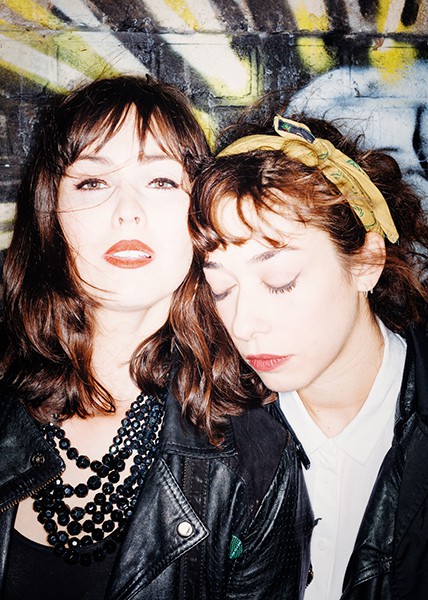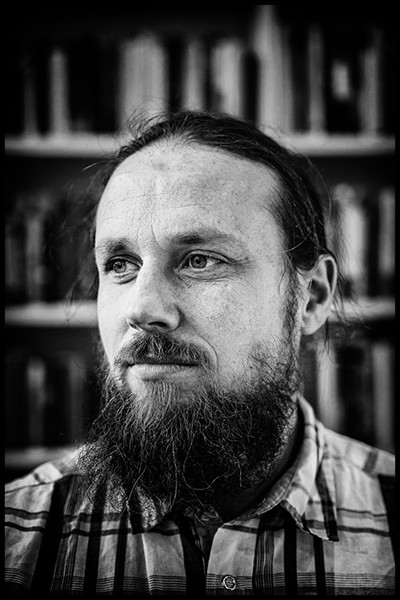Share
How to #MakeClientsHappy: Connecting with Your Subject – A Portrait Photographer’s Advice
James Bellorini is a documentary, commercial and editorial photographer based in London, England. James covers a wide range of subjects in his port...

James Bellorini is a documentary, commercial and editorial photographer based in London, England. James covers a wide range of subjects in his portraiture, “One day I might be shooting a performer or actor, the next it might be team members of international banks or a campaign portrait for a charity,” says James. With a background in theater and an emphasis on personal storytelling, James had a lot to share with us about building relationships with his portrait subjects to make them happy while delivering excellent customer service.
PhotoShelter: How do you build rapport with your portrait subjects and clients?
James Bellorini: Portrait photography is about building trust, and I have three watchwords to help me in this when it comes to building rapport with my portrait clients: listen, identify, empathize. For example, I like to meet my clients informally beforehand and have a conversation over a coffee to ask questions about their intentions and hopes for the shoot, and what they want to ‘say’ with the images. While it’s not always practical or possible to meet beforehand and sometimes I only have 10 minutes with a sitter on a shoot (say in a corporate context) – but those three watchwords work the same for me in that context too. They are short-cuts to engagement, and help relax both the sitter and myself.
The other thing that helps me build rapport during the shoot is preparation: I ensure everything is ready for the subject so there’s only minimal ‘tweaking’ once they arrive. Nothing loses a subject’s interest more than the photographer fiddling nervously with the equipment. It’s also important to have a plan ‘B’ in case anything changes beyond your control (i.e. additional lighting options, back-up camera etc etc).
I really believe in the importance of collaboration and try to underline this with my subjects and clients – we’re working together to get what they want – and that’s not so easy to achieve if you’re distracted with technology or more focussed on yourself or your camera than the subject.
How is your relationship different with a client who is the subject versus when the client is hiring you to shoot a portrait subject?
With clients who hire me to shoot a portrait, there is inevitably a much lengthier process of discussion around the finer points of a brief, budgets, logistics etc. I still bring my ‘watchwords’ into this relationship however, because I’m trying to get into another mindset and understand the expectations of both my immediate client (who might be a design company for example) and, by extension, their client.
On shooting day, it’s about building trust and rapport as quickly as possible with the client and the sitter. I refer to the client (usually an art director) throughout the day quite a bit, checking in with them about the images, set-ups, and more. I always chat with the subjects beforehand while they are in make-up or prep to break the ice. Once shooting begins I usually find the short-cuts into that trust/relaxation zone (again it’s about engagement and those three watchwords). Usually on a shoot like this there’s a very clear result that has been outlined by all parties which helps us both. For me, it’s about being responsive to that. At the end of the day, it’s about their expectation not mine.
How do you provide great customer service to your portrait clients?
Flexibility. Options. Ease of use. Ease of access.
Flexibility and options: As a photographer, I offer solutions to any potential obstacles and problems. I’m looking to create the best outcome for my subjects, so keeping options open for the client is important. Whether they want to shoot in a studio, on location, or in their own home – I’ve built my equipment kit to accommodate their needs and wants.
Ease of use: As a portrait photographer, you must be approachable, easy to work with, and honest. If something isn’t going to workout as planned, you must speak up, and then work with the client to find a better alternative. I’ve also found that sending the client a ‘crib sheet’ prior to a shoot to help them think about why they are having their photo taken, what they want to capture and, practically, what to wear, and make-up ‘do’s and don’ts’. This is especially geared towards my artist and performers clients and corporates.
Ease of access: It’s really important to me that once the shoot is finished, the client still feels involved in the editing process, especially with portraiture as it’s a sensitive area to shoot in. They need to feel free to get the images they want and know that I’m not going to judge them if they start asking for me to remove some lines around their eyes or mask skin blemishes. I make it clear from the start that this kind of work is part and parcel of what I’m providing.
I back all of this up with the practical things that are the bedrock of most photographer’s businesses: easy to use online private proofing galleries, easy digital file delivery, hi-res and lo-res files as a matter of course (these days everyone wants their images to be available for social media or websites straight ‘out of the box’), re-touch options, creative post-processing, and print options.
How do you target new portrait clients?
I focus and rely greatly on the strength of my latest work and my personality, as well as do mailer about twice a year. A good photo or two from an assignment that a client might post on their Facebook page or Twitter feed, or that I put on my blog, goes a long way to building momentum toward the next client. If the sitter is part of an industry network then there’s a ripple effect which has always resulted in more work.
Going forward, I’m concentrating more on developing my skills as a photographer, strengthening my portfolio, and meeting people – for now that seems to be working.






